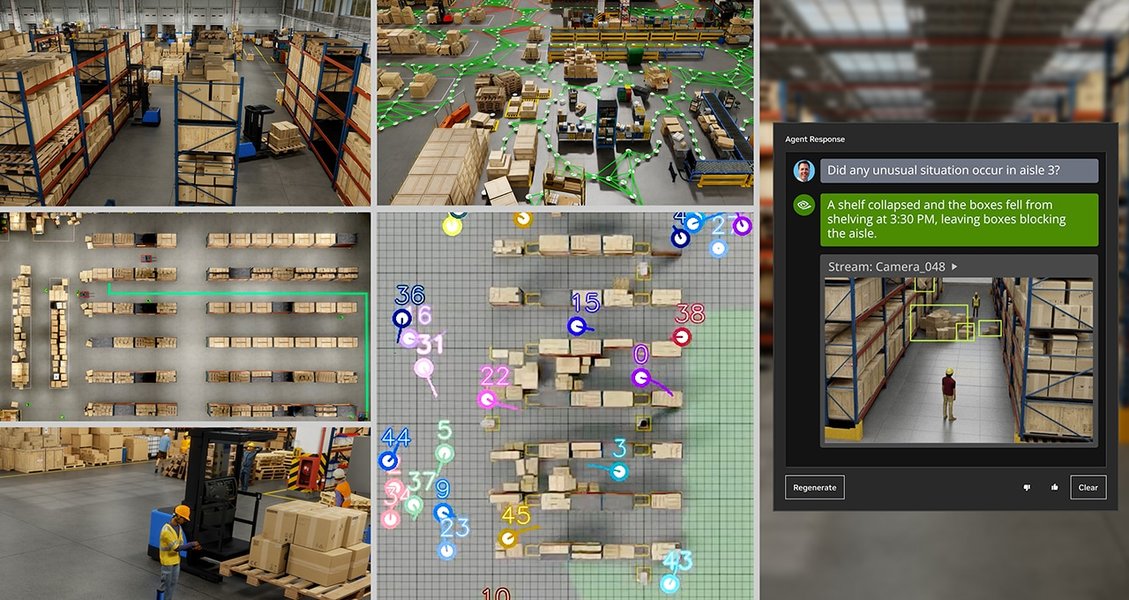
Combining AI Models: A Comprehensive Guide
Exploring the techniques, benefits, and applications of merging AI models into a unified system.
Key Highlights
- Model merging combines the strengths of multiple pre-trained AI models into a single, more powerful model.
- Techniques like ensemble learning, stacking, and model averaging are crucial for effectively merging models.
- Merging AI models can enhance performance, save computational resources, and enable new capabilities.
In the rapidly evolving field of artificial intelligence, combining multiple AI models into a single, cohesive system has emerged as a powerful strategy. This approach, often referred to as model merging or ensemble learning, allows developers to leverage the unique strengths of different models, resulting in enhanced performance, improved generalization, and increased efficiency. This comprehensive guide explores the various techniques for combining AI models, their benefits, and practical applications.
Understanding the Basics of Model Merging
Model merging involves integrating two or more pre-trained AI models to create a final model that leverages the strengths of each individual model. This technique is particularly useful when dealing with complex tasks that require diverse capabilities or when aiming to improve the overall performance of a model. Several key concepts underpin the process of model merging:
What is Model Merging?
Model merging is the process of combining different AI models into a single model, retaining the abilities of each model involved in the merge. It's a relatively new and experimental method to create new models cost-effectively. This technique is akin to blending different pre-trained models to create a final model that takes advantage of each model's strengths, thereby boosting its overall performance.
Why Merge Models?
There are several compelling reasons to merge AI models:
-
Enhanced Performance: Combining models can lead to higher accuracy and better generalization compared to using a single model.
-
Resource Efficiency: Merging models can reduce the computational resources needed for deployment, as a single model replaces multiple ones.
-
Specialized Capabilities: By merging models trained on different tasks or datasets, it is possible to create a model that excels in a broader range of applications.
-
Improved Robustness: Merging can increase the robustness of the model by averaging out the errors of individual models.
Techniques for Combining AI Models
Various techniques can be employed to combine AI models, each with its own advantages and considerations. These methods range from simple averaging to more complex learning algorithms.
Ensemble Learning
Ensemble learning involves training multiple models and combining their predictions to make a final decision. This approach leverages the diversity of the individual models to reduce errors and improve overall accuracy.
Ensemble Learning: The AI Secret Behind Smarter Predictions
This video explains ensemble learning in AI, including popular techniques like Adaboost, Random Forest, and Gradient Boosting. Ensemble methods get the most from your AI toolbox. The approach is a powerful way to improve the performance and robustness of AI models by combining the strengths of multiple individual models.
Bagging
Bagging (Bootstrap Aggregating) involves training multiple instances of the same model on different subsets of the training data. The final prediction is obtained by averaging the predictions of all models. This technique is particularly effective in reducing variance and improving the stability of the model.

AI envisions futuristic sustainable city with biophilic skyscrapers
Boosting
Boosting is an iterative technique where models are trained sequentially, with each model focusing on correcting the errors made by the previous ones. Examples of boosting algorithms include AdaBoost and Gradient Boosting. Boosting can significantly improve the accuracy of a model, but it is also prone to overfitting if not carefully tuned.
Stacking
Stacking involves training a meta-model that combines the predictions of multiple base models. The base models are trained on the original training data, and the meta-model is trained on the predictions of the base models. This technique can capture complex relationships between the base models and improve the overall performance of the ensemble.
Model Averaging
Model averaging is a simple yet effective technique that involves averaging the weights of multiple pre-trained models. This approach can be particularly useful when the models are trained on similar tasks or datasets. Different methods of model averaging include:
Simple Averaging
Simple averaging involves taking the arithmetic mean of the weights of the models. This method is straightforward to implement and can provide a good baseline for model merging.
Weighted Averaging
Weighted averaging assigns different weights to the models based on their performance or other criteria. This allows for prioritizing the models that are more accurate or reliable.
SLERP (Spherical Linear Interpolation)
SLERP is used to merge two models by creating a smooth transition between their weights. This method works well for merging two models and ensures that the merged model retains the desirable properties of both models.
Practical Applications of Model Merging
Model merging has a wide range of practical applications across various domains.
Natural Language Processing (NLP)
In NLP, model merging can be used to combine language models trained on different datasets or tasks. For example, one can merge a model trained on general text data with a model fine-tuned for sentiment analysis to create a model that performs well in both tasks.
Computer Vision
In computer vision, model merging can be used to combine models trained on different image datasets or tasks. For instance, one can merge a model trained on object detection with a model fine-tuned for image classification to create a model that excels in both tasks.

NVIDIA Combines Digital Twins With Real-Time AI
Speech Recognition
Model merging can be used to combine acoustic models and language models in speech recognition systems. This can improve the accuracy and robustness of the system, especially in noisy environments.
AI Voice Models
AI voice models can be combined to create unique voices, which helps avoid copyright issues. Tools like RVC v2, a free open-source AI voice changer, facilitate this process.
Considerations and Challenges
While model merging offers numerous benefits, it also presents several challenges that need to be addressed.
Compatibility
Ensuring that the models being merged are compatible with each other can be a significant challenge. Models may have different architectures, input requirements, or output formats, which can complicate the merging process.
Overfitting
Ensemble methods, especially boosting, are prone to overfitting if not carefully tuned. It is crucial to use techniques such as cross-validation and regularization to prevent overfitting and ensure that the merged model generalizes well to new data.
Computational Cost
Training multiple models and combining their predictions can be computationally expensive, especially for large models and datasets. It is important to consider the computational cost when choosing a model merging technique and to optimize the process as much as possible.
Interpretability
Merged models can be more difficult to interpret than individual models, making it harder to understand why they make certain predictions. This can be a concern in applications where interpretability is important, such as healthcare and finance.
Tools and Libraries for Model Merging
Several tools and libraries facilitate the process of model merging, making it easier to implement and experiment with different techniques.
Mergekit
Mergekit is a toolkit specifically designed for merging pre-trained language models. It supports various merging techniques and provides a user-friendly interface for combining models.
Scikit-learn
Scikit-learn is a popular machine learning library that provides a range of ensemble learning algorithms, including bagging, boosting, and stacking. It also offers tools for model selection and evaluation.
TensorFlow and PyTorch
TensorFlow and PyTorch are widely used deep learning frameworks that provide the flexibility to implement custom model merging techniques. They also offer tools for training, evaluating, and deploying models.
Illustrative Table of Model Merging Techniques
The following table summarizes the key model merging techniques discussed, highlighting their advantages, disadvantages, and typical applications.
| Technique | Description | Advantages | Disadvantages | Applications |
|---|---|---|---|---|
| Ensemble Learning (Bagging) | Training multiple instances of the same model on different data subsets and averaging predictions. | Reduces variance, improves stability. | Can be computationally expensive. | Image classification, regression. |
| Ensemble Learning (Boosting) | Training models sequentially, each correcting errors of the previous ones. | Significantly improves accuracy. | Prone to overfitting, requires careful tuning. | Fraud detection, medical diagnosis. |
| Stacking | Training a meta-model to combine predictions of multiple base models. | Captures complex relationships, improves overall performance. | More complex to implement. | Predictive modeling, risk assessment. |
| Model Averaging (Simple) | Taking the arithmetic mean of the weights of the models. | Easy to implement, provides a good baseline. | May not always yield optimal results. | General-purpose model merging. |
| Model Averaging (Weighted) | Assigning different weights to models based on performance. | Prioritizes accurate models, improves performance. | Requires careful selection of weights. | Financial forecasting, sales prediction. |
| Model Averaging (SLERP) | Creating a smooth transition between model weights. | Retains desirable properties of both models. | Suitable for merging two models. | Language model merging. |
Future Trends in Model Merging
The field of model merging is rapidly evolving, with new techniques and applications emerging all the time. Some of the key trends to watch out for include:
Automated Model Merging
As the number of available models continues to grow, there is increasing interest in developing automated techniques for model merging. These techniques would automatically select the best models to merge and optimize the merging process, reducing the need for manual intervention.
Multi-Modal Model Merging
Multi-modal AI systems combine and process multiple data types. Multi-modal model merging involves combining models trained on different modalities, such as text, images, and audio. This can enable the creation of more powerful and versatile AI systems.
Federated Model Merging
Federated learning involves training models on decentralized data sources, such as mobile devices or edge servers. Federated model merging combines models trained in a federated setting, allowing for the creation of global models without sharing sensitive data.
FAQ
What is the primary goal of model merging?
The primary goal is to create a single model that leverages the strengths of multiple individual models, resulting in enhanced performance, improved generalization, and increased efficiency.
What are the main challenges in model merging?
The main challenges include ensuring model compatibility, preventing overfitting, managing computational costs, and maintaining interpretability.
How does ensemble learning improve model performance?
Ensemble learning improves model performance by combining the predictions of multiple models, reducing errors, and increasing overall accuracy through diversity.
What is the role of Mergekit in model merging?
Mergekit is a toolkit specifically designed for merging pre-trained language models, supporting various merging techniques and providing a user-friendly interface for combining models.
What are some future trends in model merging?
Future trends include automated model merging, multi-modal model merging, and federated model merging, which aim to enhance the efficiency and versatility of AI systems.
References
Last updated April 12, 2025